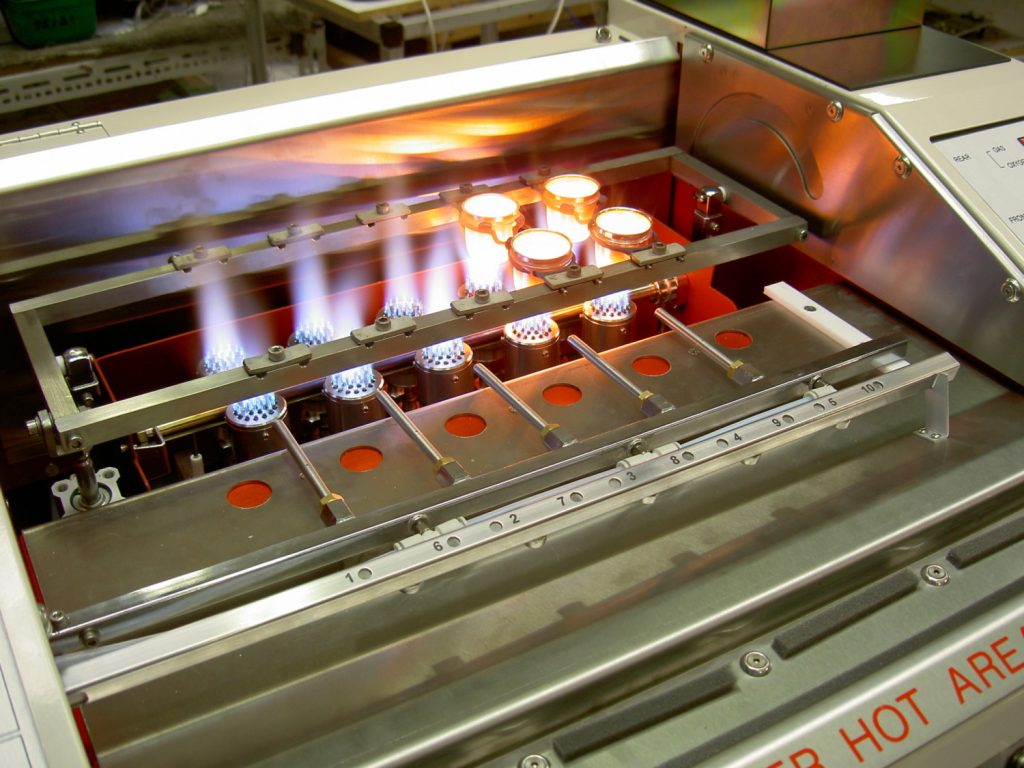Glass Bead Machines for XRF Analysis of Iron Ore
Analyzing iron ore through x-ray fluorescence (XRF) analysis is a complicated procedure with interest from multiple industrial and academic disciplines. Chemists, mining engineers, and geological archaeologists all have cause to assess the composition of iron ore down to the sub-parts per million (ppm) range.
Glass bead machines enable analysts to prepare iron ore samples of nearly ideal homogenous consistencies for ultra-precise analysis of iron ore. Once the extracted geological sample has been crushed to a fine consistency with particle sizes of no more than 100 micrometres (µm), it can be carefully doped with a suitable lithium metaborate and lithium tetraborate flux mixture for sample fusion in a glass bead machine.
The Phoenix gas fusion glass bead machine has proven capacities in the field of iron ore sample preparation for XRF analysis. This blog post will outline the experiment parameters in further detail, highlighting the capacities of glass bead machines for cutting-edge elemental analysis.

Iron Ore Analysis: Experiment Parameters
The primary component of the experiment is the Phoenix VFD glass bead machine which is engineered for continuous use temperatures of up to 1250°C (2282°F), with robust Inconel cradle holders suitable for a full range of platinum crucibles and moulds.
Prior to sample fusion, dried and homogenized iron ore samples of up to 9g were weighed with a measuring spatula then were dosed with 9g of a lithium borate mixture with a ratio of 66 – 34 lithium tetraborate – lithium metaborate. This was doped with a lithium nitrate oxidiser as opposed to sodium to protect the platinum crucible from chemical attack by the non-fully oxidised molten mixture. This sample was then thoroughly mixed before being transferred to a platinum – gold crucible with a ratio of 95 – 5%.
A micropipette was used to introduce the non-wetting release agents on top of the sample mixture before the crucible was introduced to the crucible holder of the glass bead machine. The Phoenix VFD glass bead machine is equipped to perform numerous customizable thermal processing profiles. In this instance, the glass bead machine was set to prewarm up to 300°C, then pre-melt up to 800°C. The glass bead machine carried out two melting stages, once without and once within mechanical stirring at temperatures of 1100°C. The glass bead machine then heated the moulds at temperatures of 1050°C and poured the molten mixture automatically.
This sample preparation methodology is ideal for preparing near-homogenous iron ore samples for XRF analysis.
Glass Bead Machines from XRF Scientific
The Phoenix VFD is part of a leading line of gas fusion machines equipped to prepare organic samples as XRF glass discs or beads. These glass bead machines have found increasing use in the fields of chemical analysis and geological exploration.
If you would like any more information about our glass bead machines, please do not hesitate to contact us.









